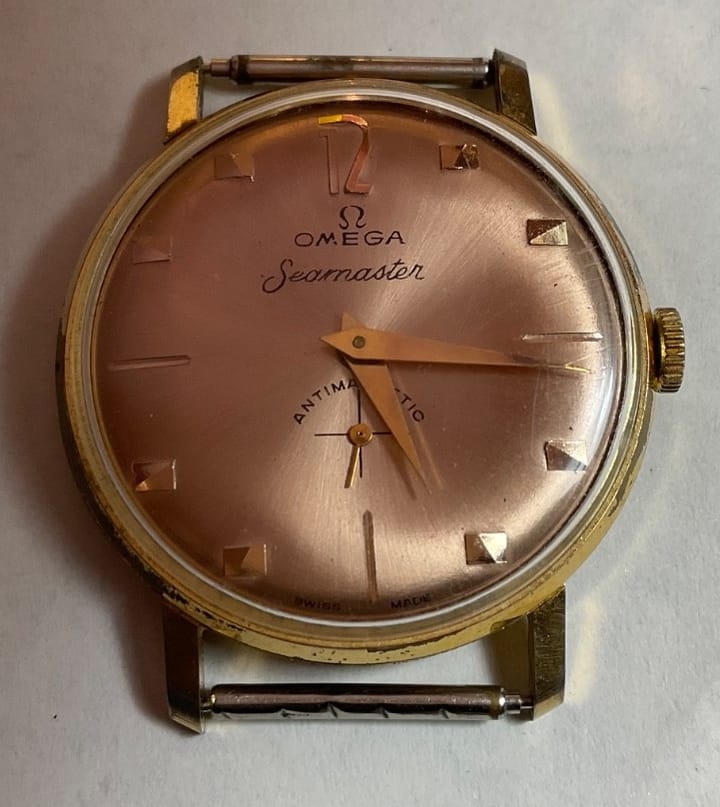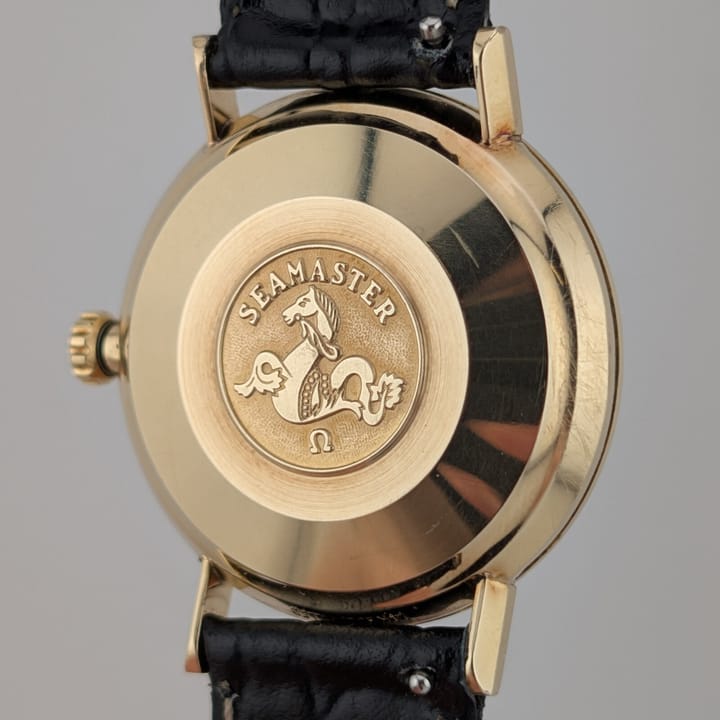We give our review of the new 2026 Seamaster Planet Ocean Fourth Generation Cal 8912 Dive watch, discussing its design, thickness, heritage and how it stacks up against the past Planet Oceans
Is the new Seamaster Planet Ocean thinner and by how much?
Yes. Significantly thiner at a claimed 13.79mm.
Planet Ocean Generation Thickness Comparison
| Watch Model | Thickness (mm) | Difference (mm) | Difference vs. Gen 4 (%) |
|---|---|---|---|
| Gen 4 (42mm) | 13.79 | 0.00 | 0.00% |
| Gen 3.5 (39.5mm) | 14.16 | +0.37 | +2.68% |
| Gen 3 (43.5mm) | 16.09 | +2.30 | +16.68% |
| Gen 2 (42mm) | 15.80 | +2.01 | +14.58% |
| Gen 1 (42mm) | 14.20 | +0.41 | +2.97% |
This makes the new fourth-generation Planet Ocean 2.3 mm thinner than the 43.5 mm Cal 8900 Planet Ocean, 0.37 mm thinner than the previous MIDSIZE 39.5 mm Cal 8800 Planet Ocean, and 0.41 mm thinner than the original 42mm Cal 2500 Planet Ocean of the 2000's.
Omega has definitely known for some time that the Planet Ocean was carrying too much of a belly. While they packed tech, finishing quality, and features into this 600M water resistance rated diver, the penalty was starting to become really apparent when at 16.09mm, the third generation didn't fit under most shirt cuffs.
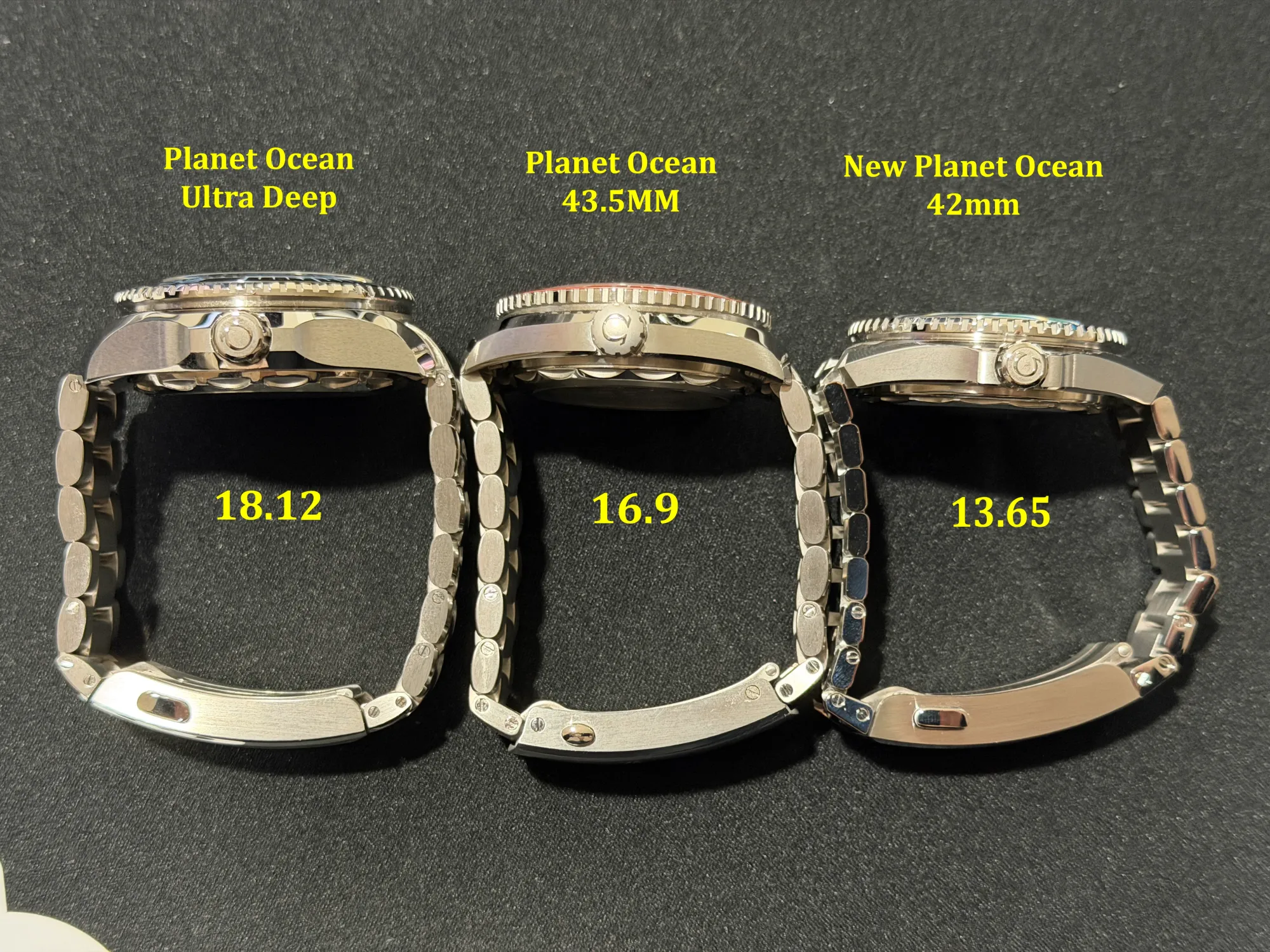

A great comparison between the Planet Ocean Ultra-Deep, Planet Ocean Gen 3 43.5mm, and new Planet Ocean Gen 4 42mm using actual hands-on measurements, which will differ from official measurements by Omega Forums member @cerberus63
The problem of customers wanting one but not being able to fit something so big on their wrist resulted in the release of the 39.5 mm Planet Ocean powered by the slimmer single-barrel equipped Calibre 8800 movement more commonly seen in the Seamaster Pro 300M line.
This "Mid-size" Planet Ocean, effectively a generation 3.5, quickly gained popularity and was seen by many as the all around best variant for both men and women owing to its far better ergonomics. Despite being fairly new, it became one of the most common Planet Oceans seen in the wild on wrists, especially with the release of the Summer Blue variant.

For Omega to have shaved another 0.37 mm off of that impressive mid-size model with the new range of 42mm offerings, while keeping the dual-barrel Calibre 8912 movement is genuinely impressive.
It does also beg the question, could a new mid-size be on the cards, combining the new case architecture of the fourth gen with a thinner Cal 8800 movement in the coming year?
Red Meat for the Omega Collector Base
This new fourth generation Planet Ocean has countless nods to the past, while taking the design in a very new direction.
Faded Blue "Vintage" Bezel
The new "faded blue" bezel option is particularly striking, taking inspiration from the vintage Speedmaster and Seamaster aluminium bezels that often fade with age to a cool steel blue colour, it gives the watch that vintage diver feel of patina without compromising on finishing.
The new ceramic bezel design also features an inner titanium ring, and contrasting white ceramic for the indices resulting in better legibility than the previous silver LiquidMetal indices, a nice touch.
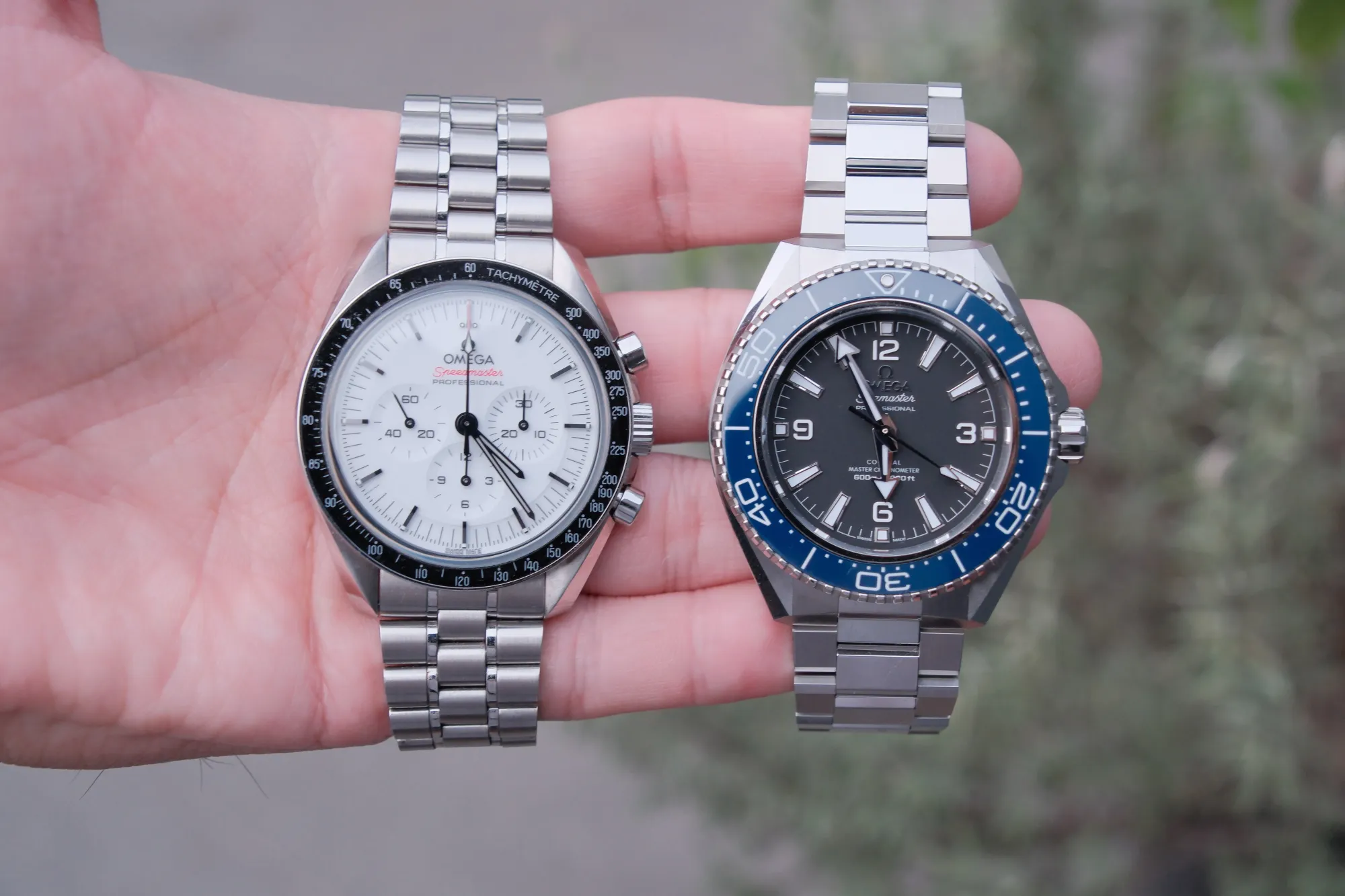
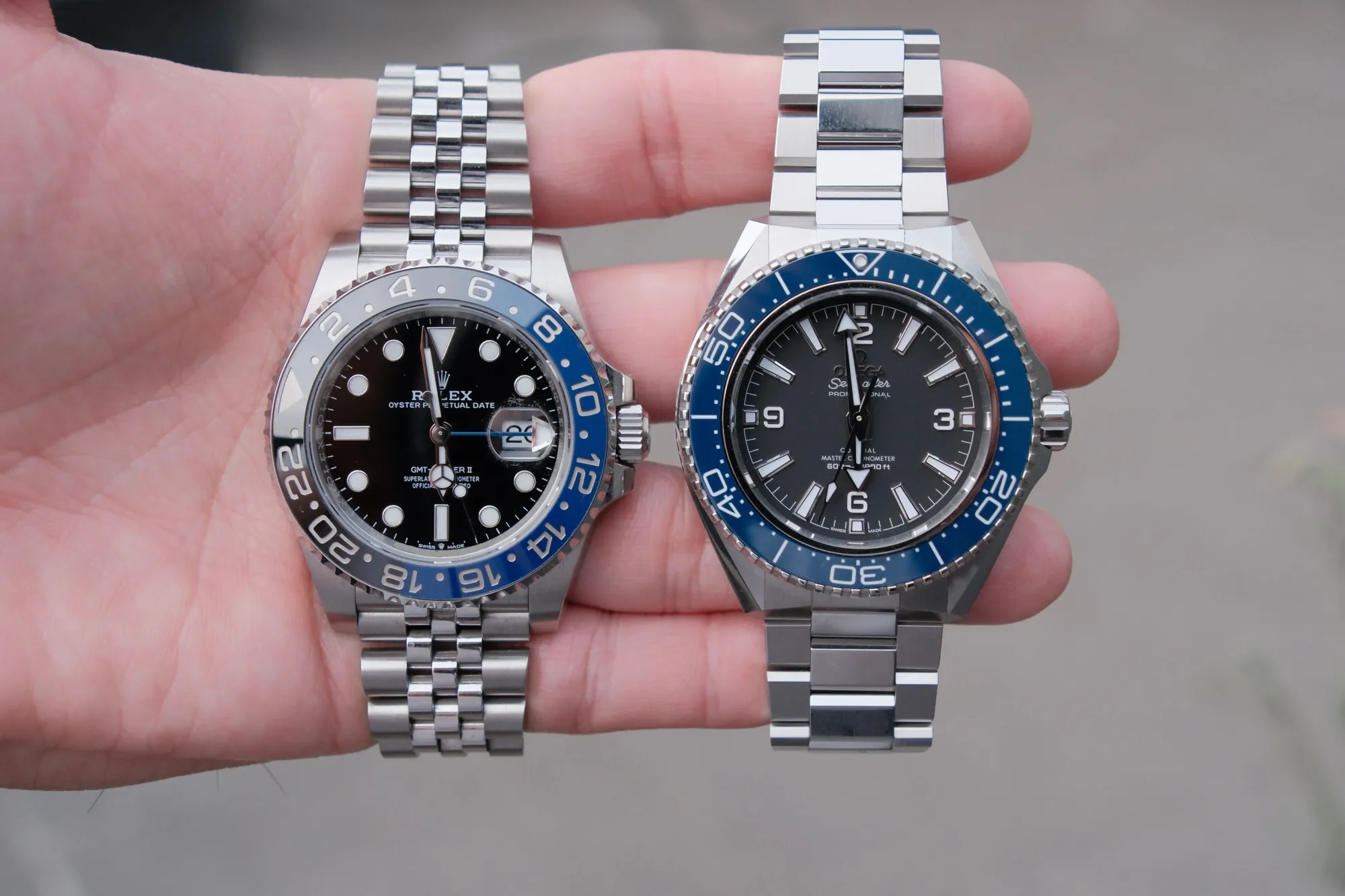
A comparison between the Blue Seamaster Planet Ocean Gen 4 and two of the most usual suspects it will sit next to in a watch box, by Omegaforums member @YandB
They know we're too lazy to keep setting the date
The No-date movement choice also tends to target collectors more, we switch and rotate watches, not wanting the hassle of date-setting when doing so. This was a slightly bigger issue with the Calibre 8900 as time-zone jumping hour hand significantly slowed down setting relatively to even Calibre 8800 quickset models. Omega seems to have noticed that the Planet Ocean sells more to multiple watch owners than the Seamaster Pro and omitted date accordingly, just as they did on the Ploprof and Bond watches in recent years.
While still effectively the same design as its predecessor, the Co-axial Master Chronometer Calibre 8912 with METAS certification is an extremely impressive, performant and durable movement with an excellent track record.

Like the Ultra-Deep, Omega seems to get that people buying more extreme dive watches don't stop at one watch, and are very lazy and are very lazy like myself, image by Omega Forums member @cerberus63
The open 6 & 9 are back, now with an open 4 on the bezel too
Open 6, 9 & 4! For the first time since the beloved and highly sought after Planet Ocean Liquid Metal Limited Edition of 2008, Omega has returned to open "stencil" arabic numerals for the applied 6 and 9 on the dial. Even the bezel features an open "stencil" 4 numeral in the 40 minute market, a feature not seen on previous Planet Oceans or on the Seamaster 300 Heritage which also received a stencil numeral font on its most recent refresh.
The matte black dials, also a callback to the original Calibre 2500 Planet Ocean has an almost Speedmaster-esque grey tone from a distance, and aids in making the applied indices, arrowhead hands and dial furniture pop off the dial with three-dimensional depth.
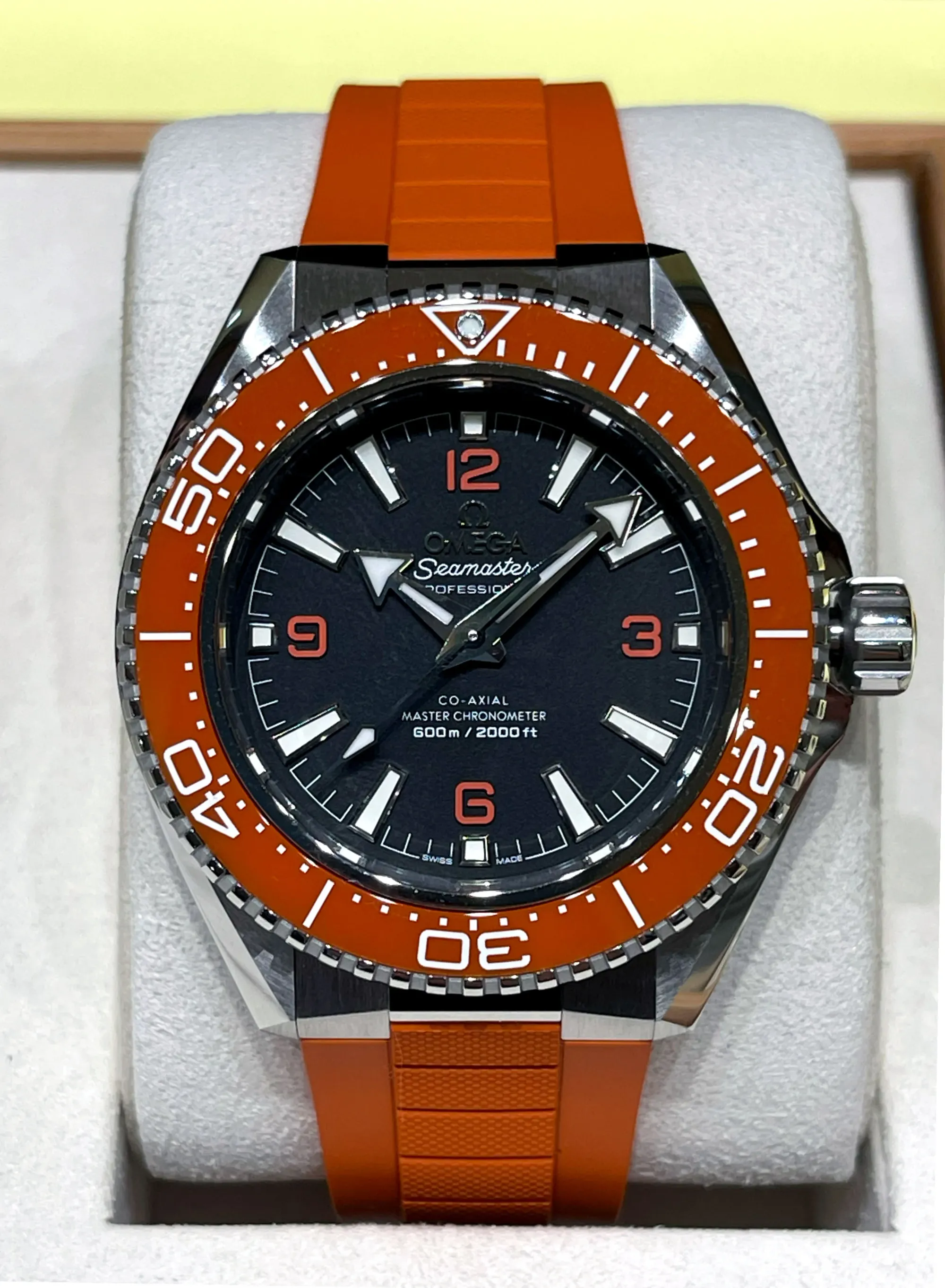
The new matte black dial on the fourth generation Planet Ocean, by Omega Forums member @Snowsquare
The first flat crystal in a Planet Ocean, with better legibility
New Planet Oceans are famous for having near-invisible crystals thanks to their anti-reflective coating on the inside and outside of the sapphire. Older, or more heavily worn Planet Oceans are famous for having that AR partially fail to the point of needing to be polished off, leaving a highly reflective domed crystal. The new flat crystal not only helps keeps the height down slightly, but in also reduces reflections in the event that the coating does wear off later in the watch's life, making a whole lot of sense.


The new flat crystal with protruding edge, better visibility but also less protection for the sapphire - image by Omega SA
Goodbye helium escape valve & display back
The all new case design is a departure from the Speedmaster-inspired asymmetrical shape of previous generations. The helium escape valves are gone, which won't bother most of the office workers who wear them for occasionally swimming. Gone too is the display-back which likely helped shave more thickness off, especially given the grade 5 titanium solid case-back.
The new design is very reminiscent of 1970's integrated bracelet Seamasters, and given the recent surge on popularity for designs like the Tissot PRX, it makes sense for the Seamaster Planet Ocean to have its own unique design language within the Omega lineup. Moving forward Omega will have four entirely distinct models, Seamaster Pro 300M, Seamaster 300 Heritage, Seamaster Planet Ocean, and Seamaster Plorprof each with very unique designs for different tastes.
These features feel very much like this new Planet Ocean is being targeted firmly at the collectors rather than the "one and done" collectors, which makes sense given how well the Seamaster Pro 300M covers that market segment.
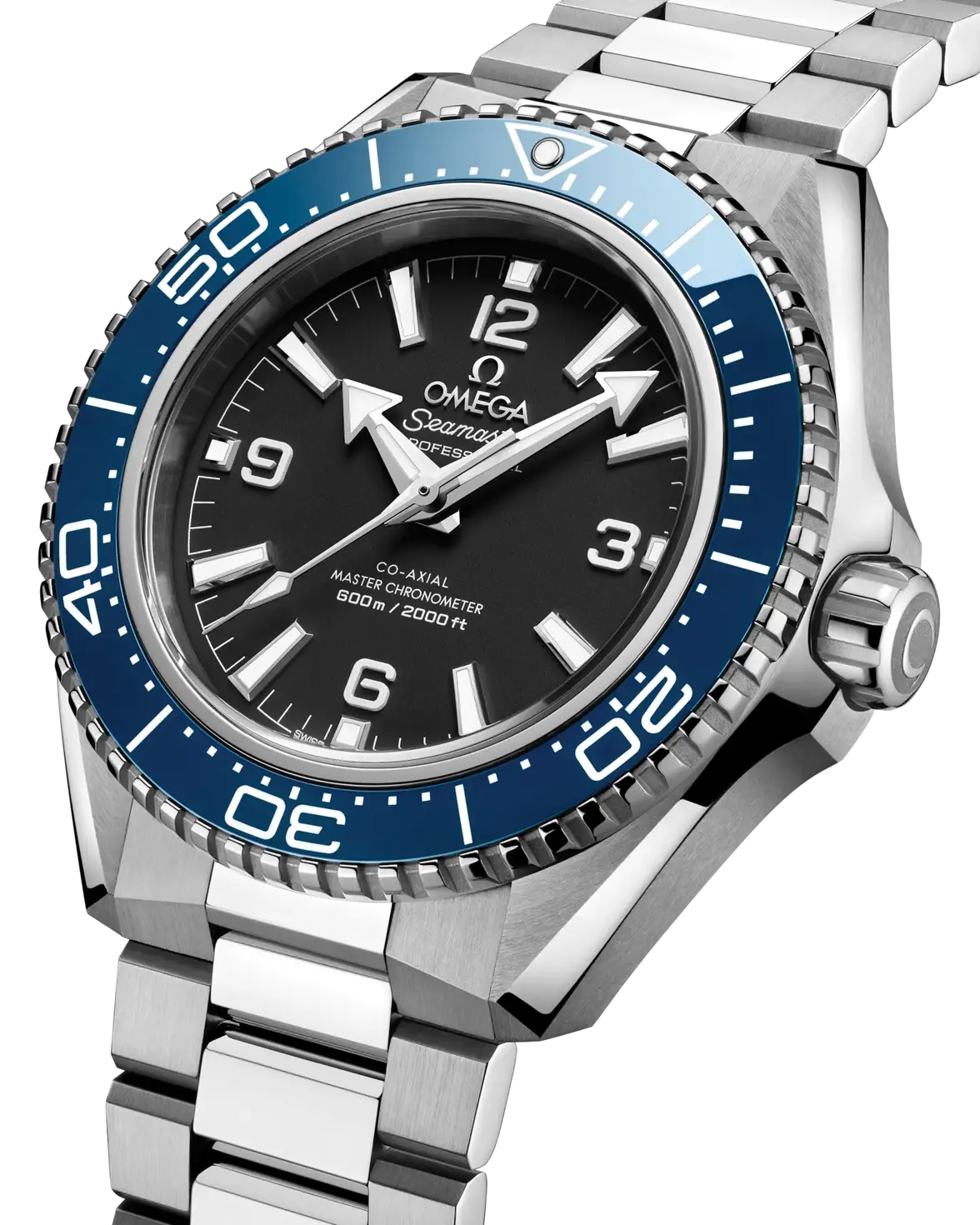
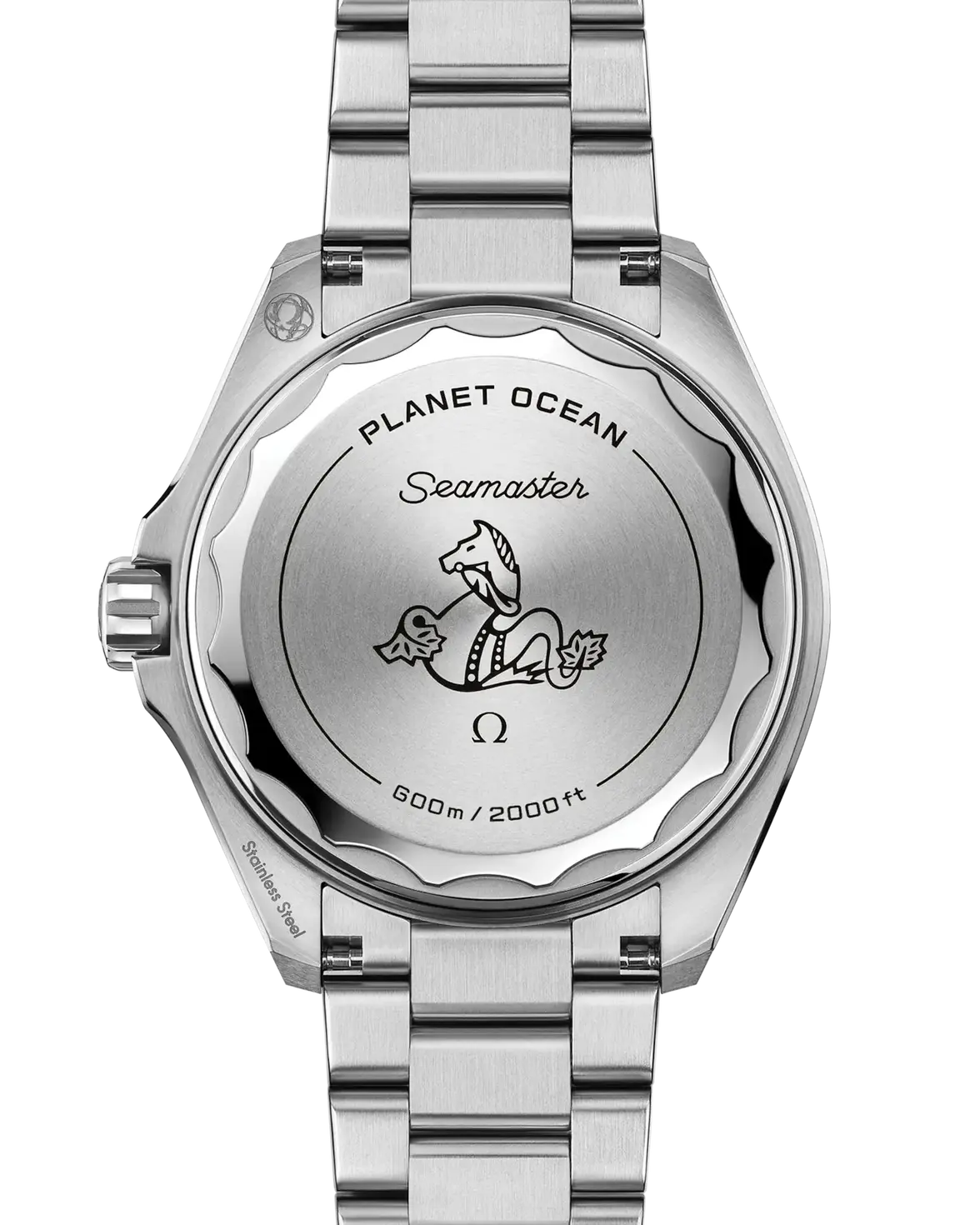
The new vintage inspired Planet Ocean Cal 8912 case with solid titanium case-back - Images by Omega SA
Buying the new Planet Ocean Cal 8912
When can I get one?
Right now. Omega boutiques already have them in stock and several Omega Forums members including @YandB, @cerberus63 & @Snowsquare have already managed to get one on their wrists.
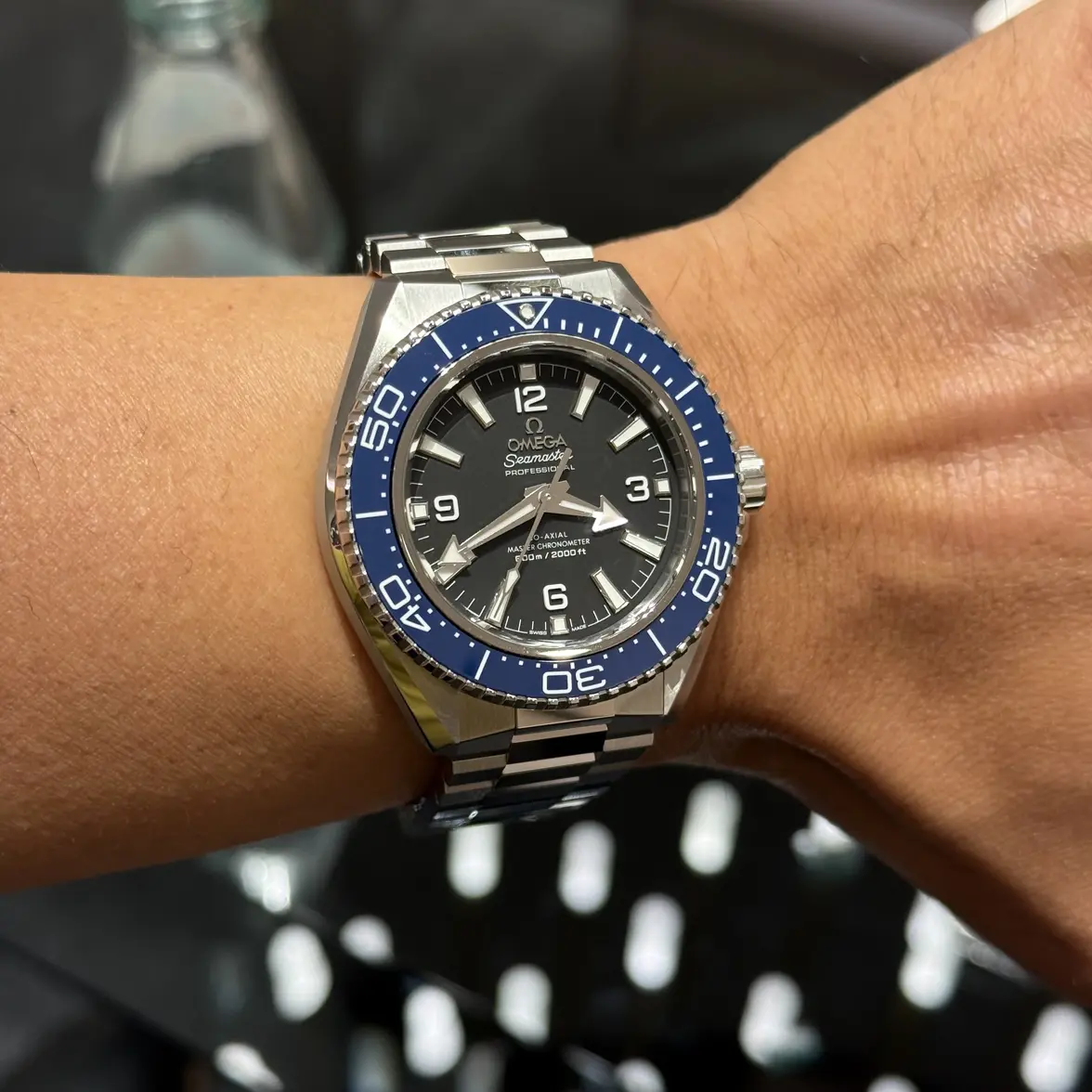
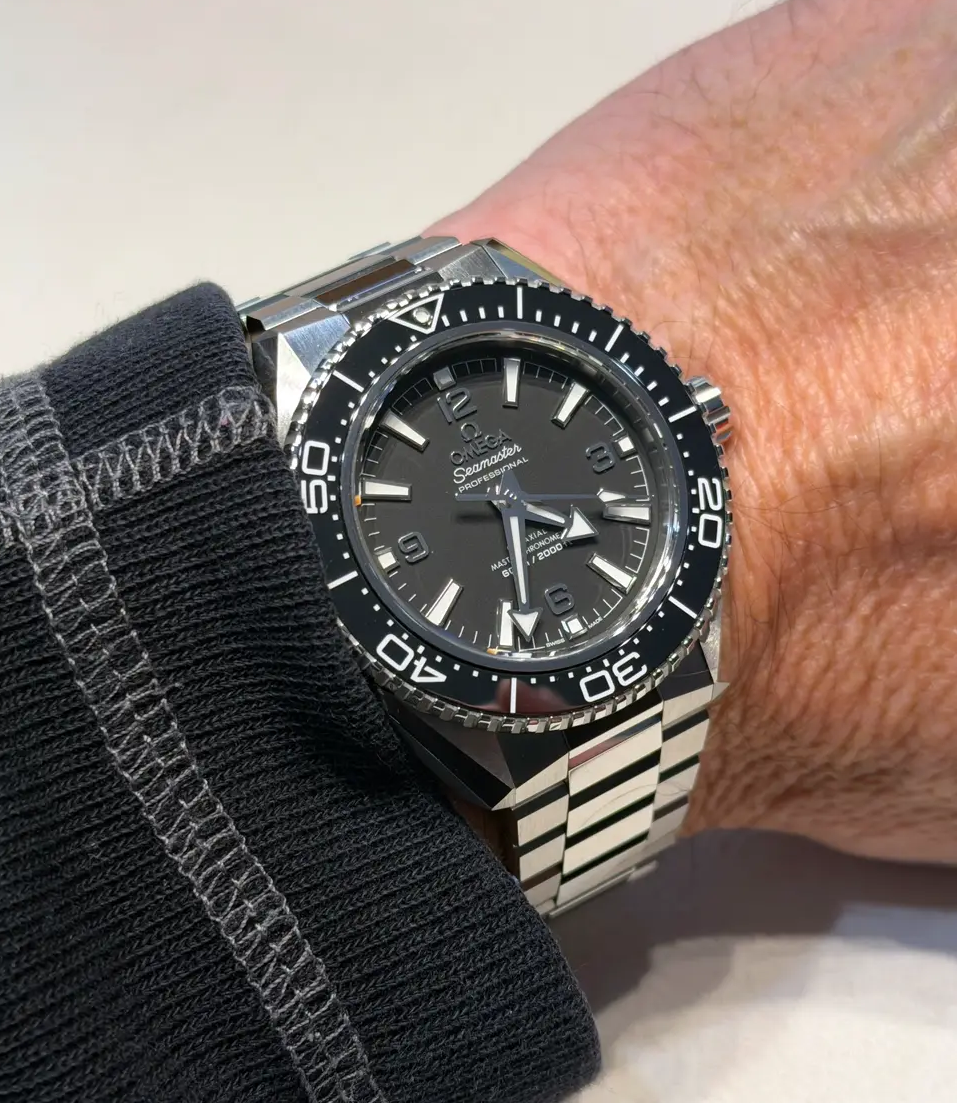
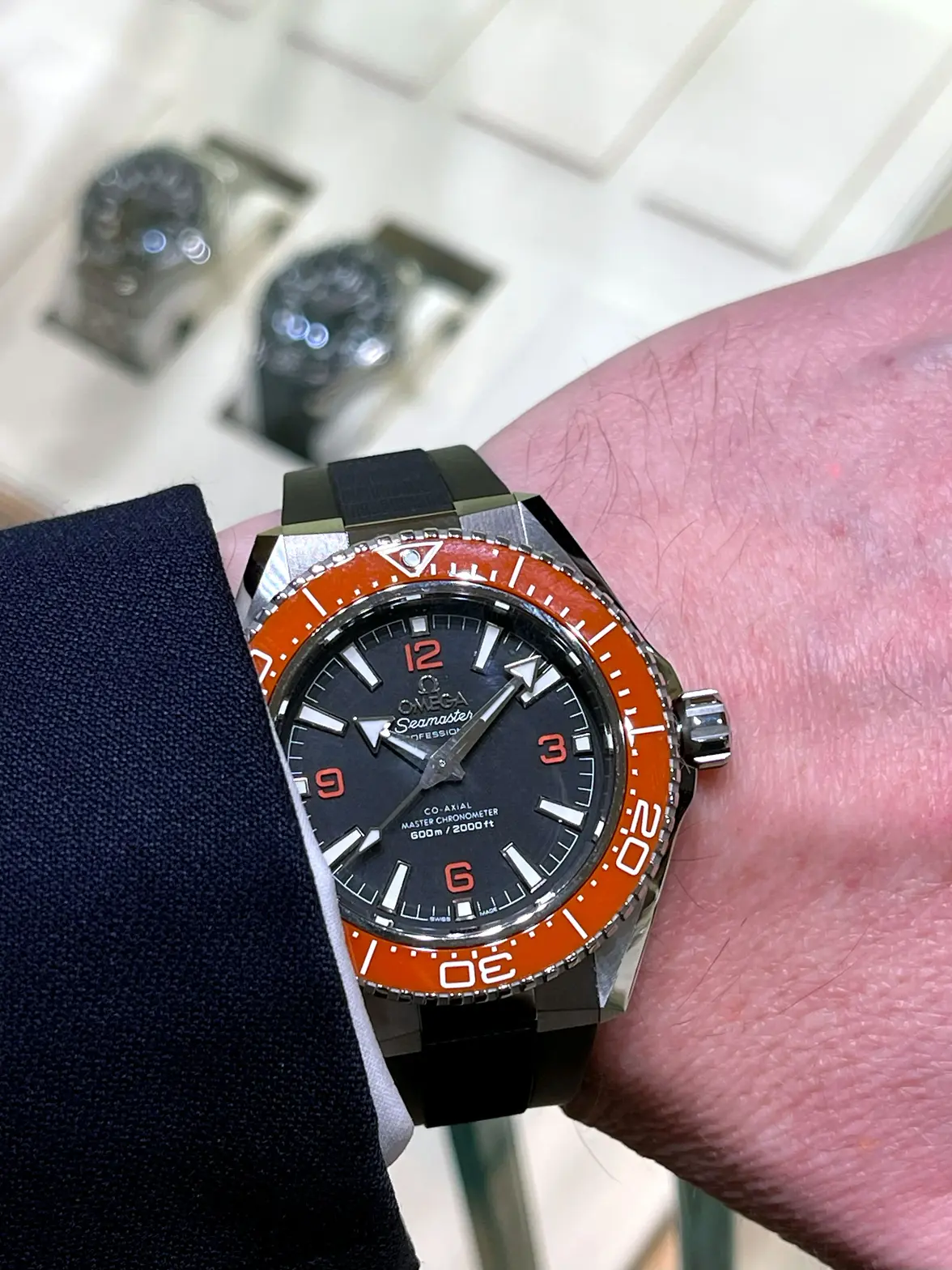
The new fourth-generation Omega Seamaster Planet Ocean Cal 8912 worn by Omega Forums members @YandB, @cerberus63 & @Snowsquare in blue, black & orange
If you can't find the model you want in your local Omega boutique, it should be possible to order one in without much delay.
Which Fourth Generation Planet Ocean should I buy?
My pick one be one of the blue models, most likely on bracelet but like all watches its a matter of personal preference. The saving by going with strap is fairly minimal as it tends to be on all Omega watches and the modern bracelet is simply too good to pass up, so if you think you'll want the bracelet at any point in the future, get it up front.
All models are 42 mm in diameter with 21 mm lugs and compatible with either bracelet or strap. Despite looking like an integrated design the rubber strap uses a flush fitting end-link to achieve its rather unique fitment and look. This also means many aftermarket options will work, though we'll need to wait and see owners try some combinations before jumping in as the spring-bar location is quite close to the case on this design.

How much is the Planet Ocean?
Well the blue models and black models are $9,200 USD on bracelet and $8,600 USD on rubber strap.
The orange model costs a bit more than the black or blue models. This is likely due to the complexity in producing an orange ceramic bezel. The orange model of the Gen 2 Planet Ocean Cal 8500 came out in aluminium while the black version was ceramic as the tech simply wasn't ready yet at launch in 2010, and it wasn't until several years later that an orange version was released in celebration of the achievement.
While Omega has produced many orange ceramic bezels in steel since, it must still be more costly to achieve, resulting in a price of $9,500 USD for orange on bracelet and $8,900 on strap.
| Model Details | Reference Number | Retail Price (USD) |
|---|---|---|
| Blue Bezel - Steel Bracelet | 217.30.42.21.01.002 | $9,200 |
| Blue Bezel - Black Rubber Strap | 217.32.42.21.01.002 | $8,600 |
| Black Bezel - Steel Bracelet | 217.30.42.21.01.001 | $9,200 |
| Black Bezel - Black Rubber Strap | 217.32.42.21.01.001 | $8,600 |
| Orange Bezel - Steel Bracelet | 217.30.42.21.01.003 | $9,500 |
| Orange Bezel - Black Rubber Strap | 217.32.42.21.01.003 | $8,900 |
| Orange Bezel - Orange Rubber Strap | 217.32.42.21.01.004 | $8,900 |

